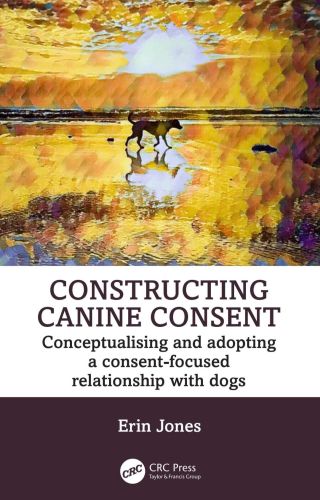Animal Behavior
Why Dogs Must Consent to What We Ask of Them
A new framework for "a dog-indexed definition of consent."
Updated April 6, 2024 Reviewed by Davia Sills
Key points
- A new book asks how “good dog” expectations influence how people treat dogs that deviate from those ideals.
- Humans need to respect a dog’s autonomy and focus on their inherent value, not just their value to us.
- It's essential to take the dog’s perspective on matters at hand and ensure that they agree with you.

Dog-human relationships range greatly from those in which dogs are at the mercy of total human control and treated as captive animals to those in which the dogs and their humans form ongoing symmetrical and respectful bonds in which they bargain and negotiate with one another in mutually agreeable ways. The concepts of consent, autonomy, and agency (granting a dog the freedom to make their own choices as much as possible) focus on the importance of taking a dog’s perspective on matters at hand and ensuring that they agree with what you want them to do. While we don’t yet know if consenting dogs are happier than non-consenting dogs in the same way that consenting cats are happier than non-consenting cats, there’s no reason to expect that they’re not.
There’s no doubt that the best dog-human relationships are two-way affairs in which there is a good deal of give-and-take, and that is why Dr. Erin Jones’ new book Constructing Canine Consent: Conceptualizing and Adopting a Consent-Focused Relationship With Dogs caught my eye and my heart and why I believe it is essential reading for anyone who lives with or works with dogs. Here’s what she had to say about her landmark book.
Mark Bekoff: Why did you write Constructing Canine Consent?
Erin Jones: It evolved in a somewhat organic way. I started my Ph.D. at the beginning of 2019, and my focus was on the ethical dimensions of the dog-human relationship. I was interested in the ways that our expectations of “the good dog” influence how we treat them when they deviate from those ideals.
Around that time, I brought home my dog, Juno. She was a sensitive puppy and quite fearful of anything novel or unpredictable. As I started to think about ways of incorporating cooperative care and allowing her the freedom to move and learn thoughtfully at her pace, I started to dig into the topic of consent.
However, something that felt really simple to me suddenly became a bit more complex and nuanced. It was more than simply teaching her about opting in and out of handling, and there were a lot of “what ifs” to traverse. Considering the dearth of literature on the topic, I knew it was something important that needed to be explored.
MB: How does your book relate to your background and general areas of interest?
EJ: I am a dog trainer and behavior consultant and have worked with so many dogs over the years, helping them to thrive in a very human-centric society. I think about that a lot. How we expect dogs to just “fit in” without first providing them with the skills needed to be successful and also without really taking them seriously. I really think it is so important that we respect dog’s bodily autonomy and focus on their inherent value rather than just their value to and for us. My strategy for impact is to combine my academic endeavors and my professional applications to help people better navigate interactions with their dogs.
MB: Who do you hope to reach with your book?
EJ: I hope that everyone who loves dogs can get something from my book. The idea behind it is to inspire critical thought about some tough questions. And I think depending on what level of experience you have with dogs, it may inspire different layers of inspiration and reflection.
I aim to create a framework for a dog-indexed definition of consent. So, rather than simply applying a specifically human concept to dogs, I break it down into what matters to them. Also, I explore how to ethically navigate those situations where we can use our gift of foresight to help our dogs when they cannot consent (example, emergency medical interventions).
Acknowledging that this may be a large shift in perspective for a lot of people. I hope that at the very least people begin to think about the various ways our interactions with dogs affect their well-being.1

MB: Are you hopeful that as people learn more about the importance of consent, they will work hard to get their dogs to agree with them when they want them to do something?
EJ: I am really ultimately hoping for a paradigm shift. As in, a society where we see dogs as important individuals who have the right to say yes or no in most situations and who feel empowered to do so. Where I can walk down the street with Juno and not worry that people may grope her because we all have the collective understanding that dogs are individuals who deserve respect and the right to bodily autonomy. Where people ask dogs and then listen for their response and respect their right to say no.
I think there is a worry that we will “lose control” and not get dogs to do what we want them to do. Out of any dog in my life, Juno has grown up with the most amount of autonomy and ability to express her opinions, ask for things she wants, and voice her displeasure. And there is rarely a day that goes by that I don’t walk down the street with her and have someone say, “Your dog is so well-behaved.” I cringe a little every time I hear that, but I always try to reply with something along the lines of, “We have a great relationship!”
And to be clear, that doesn’t mean that I just let her do whatever she wants whenever she wants. I have taught her skills—skills all of us have had to learn to coexist in society. I want her to respect others the way I would like them to respect her. I love that she has an opinion and feels safe enough to express it. Sure, sometimes I make suggestions like, “Hey, let’s go this way instead.” Or I might ask her to wait or come back to me. But the key is that she feels safe. Safe that I am supporting her best interests and because she has the agency to make decisions that suit her needs.
I suppose, in summation, my ideal outcome would be a world where dogs are more wholly integrated into society, respectfully, and that people learn to communicate and listen across species boundaries. And I hope the relationships that we have with dogs are as considerate and respectful as they are with any person we love and care about.
Facebook image: Nataliya Dorokhina/Shutterstock
References
In conversation with Dr. Erin Jones, a certified applied behavior consultant and Certified Professional Dog Trainer (CPDT-KA) with the Certification Counsel for Professional Dog Trainers. She is also an Accredited Dog Trainer (ADT) and Certified Dog Behavior Consultant (CDBC) with the International Association of Animal Behaviour Consultants. Jones operates the Merit Dog Project, an educational platform used to educate and inspire industry professionals and front-line specialists working primarily with dogs or dog behavior.




